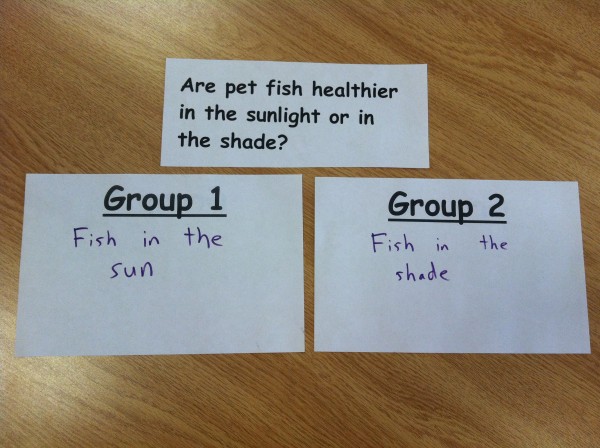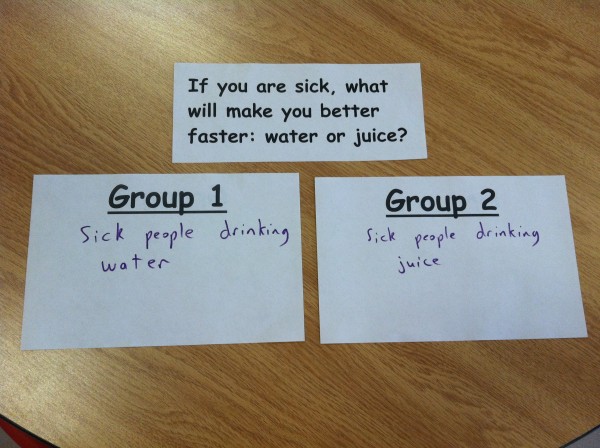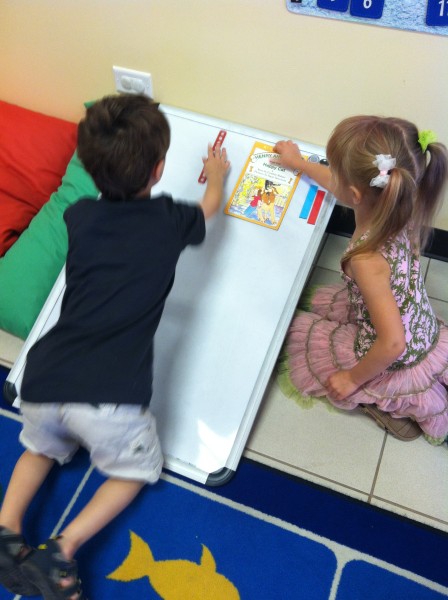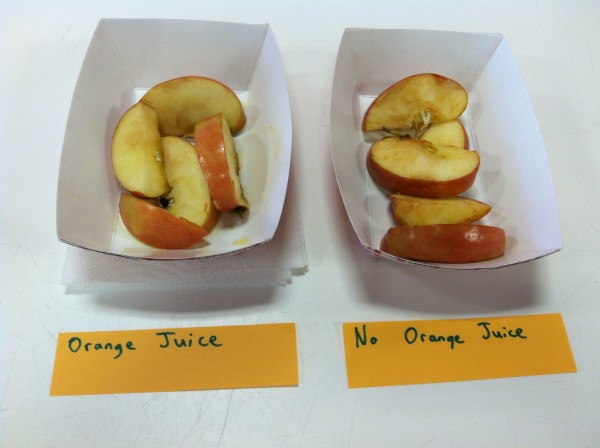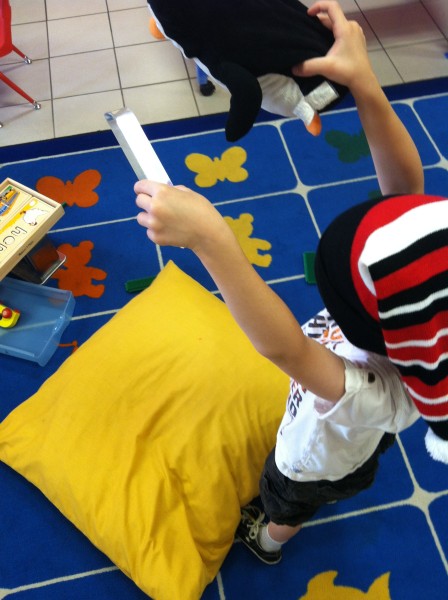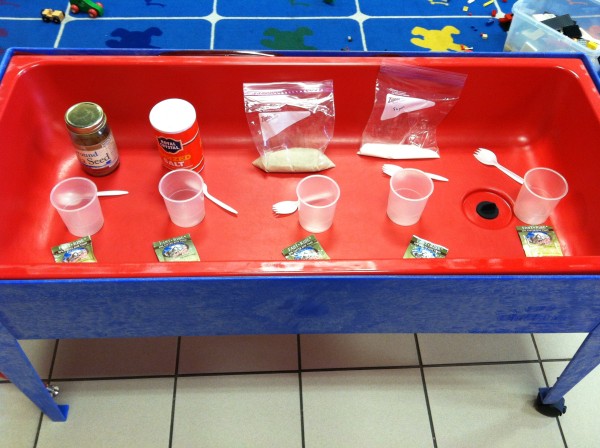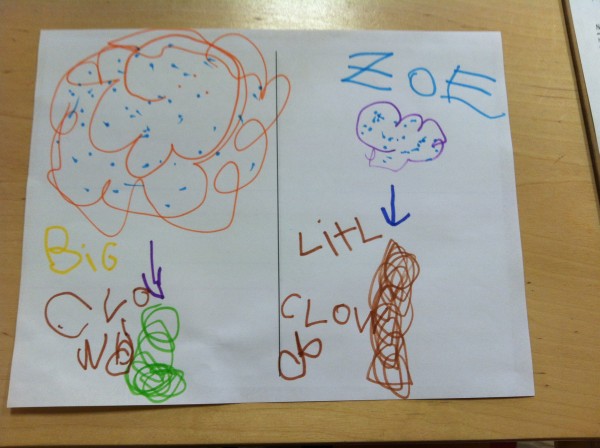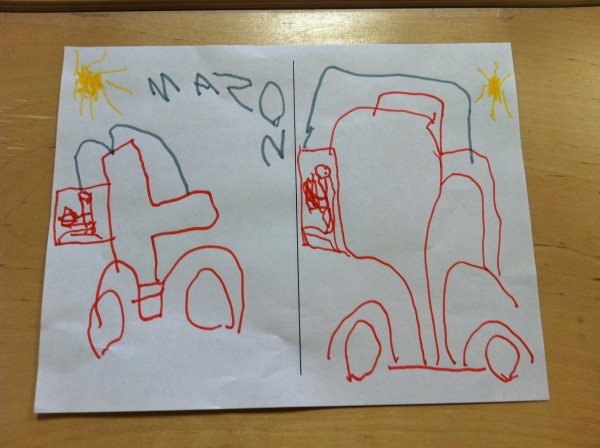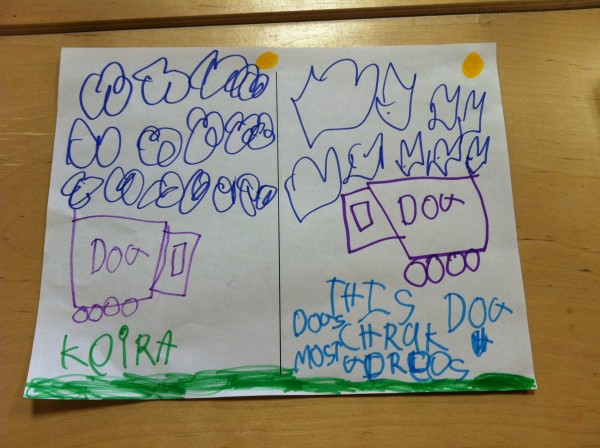Every summer, my class spends two weeks delving into the world of science. Science lessons pervade my classroom year round, but in these two weeks we dig deeper into what it really means to be a scientist.
We begin by discussing the broadest goal of science: to learn new things. Then we quickly dive into the scientific method. Some aspects of science come naturally to children — they’re curious, inquisitive, and often persistent — but the scientific method needs to be taught. Students rarely stumble upon it alone, and yet it is the crucial process that underlies scientific reasoning; it’s the ‘how’ of science. I break the steps down using the following language, which I write down and refer to repeatedly:
- Ask a question.
- Make a hypothesis.
- Make a test or an experiment.
- What did we learn? Should we do another test?
Then we practice it many times. Each day, I ask a few scientific questions. Everybody makes their hypotheses. I point out that scientists often think different things, and they often need to change their minds. Then I point to step number 2 and ask, “Are we done? Is that how science works?” and the class energetically point out that we have to make a test, or an experiment, or it won’t be science!
Now, designing an experiment can be a tall order for young students, but with a bit of scaffolding it’s impressive what children are capable of thinking up. First, it’s important to ask simple, well-phrased questions. Asking the right questions might be the most difficult part of being a scientist. Each year, I try out new questions. Sometimes students are thrown off by one or two misplaced words, so I make a lot of small edits. I print out each question in large font, and I pull the questions out somewhat ceremoniously, which adds a bit of drama. Here are examples of questions I asked this year:
- What’s healthier for cows to eat: grass or corn?
- Does algae grow faster in salt water or fresh water?
- Does eating lots of vegetables make people healthier?
- What kinds of shoes are faster for running: sneakers or sandals?
- Do plants need water to grow?
- Do balloons lose their air faster when it’s hot or when it’s cold?
- Does boiling water kill the germs in it?
- Do children learn to read faster with iPads or without iPads?
- Do carrots help people see better?
- Which kinds of baseball bats hit more home runs: metal bats or wooden bats?
Next, I ask the children to make two groups of things (or animals, or people, etc.) and we pretend to do different things to the two groups. I rely heavily on hand gestures here. I point to different parts of the floor and ask, for example, “What should we do to these cows, and what should we do to these cows?”
Most of my students catch on pretty fast. By the third or fourth day, I am overwhelmed with volunteers when I ask who thinks they know how we could make an experiment with two groups. I occasionally write down the imaginary experiments that we design as a group, using these simple forms:
After we have designed a few imaginary experiments together, each day we carry out a real experiment in the classroom. Thinking of the best experiments is a challenge. Many science “experiments” that you find in books or on the web would be more accurately described as demos, as they don’t actually involve any experimental manipulation. They also often rely on abstract, handed-down knowledge (e.g., air pressure, electricity). Such knowledge can be fascinating, but teaching it often fails to address the process by which the knowledge was accumulated. So, I try to keep things relatively simple.
Another goal is to use experiments that show their results rapidly, so that children can draw connections between what they were thinking before the experiment and how the experiment helped them learn more. Below are a few examples of experiments we ran together this summer.
The final step is to see if my students can think of new experiments independently. I give them a blank piece of paper with a line down the middle. They draw the two groups in their experiments on the two sides. Their questions are often very imaginative, of course. Some of them are pretty tough to try to answer with experimentation, but many students come up with thoughtful designs nevertheless. Here are a few of my favorites from this year:
Teaching the scientific method to young students is a pretty big challenge. I’ve chosen to simplify many things and there are aspects of science that my lessons do not address. Other educators certainly have different approaches, perhaps with equal or greater success.
I do not expect young students to reach a very deep understanding of how science works. After two weeks of imaginary and real experiments, only a handful of my students are able to turn around and competently teach the scientific method back to me. It’s difficult to assess how well the rest of the class grasps the concepts. But I’ve seen that young children can at least begin to think about the world around them scientifically. And I believe that if they do so, then they and everyone else will benefit profoundly.
